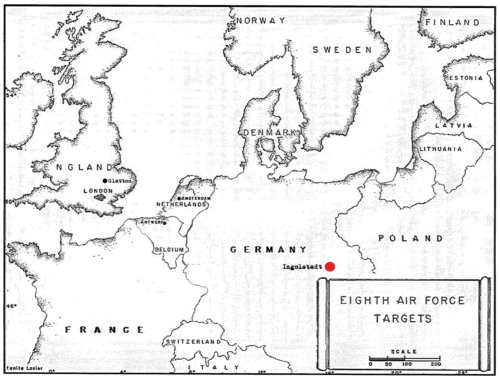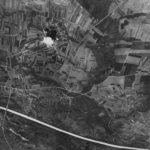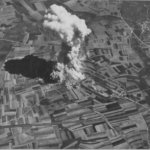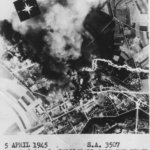TARGET: ORDINANCE DEPOT
INGOLSTADT, GERMANY
5 APRIL, 1945

The Ordinance Depot at Ingolstadt was the primary target. Major Dozier, the newly selected Commanding Officer of the 748th Bomb Squadron, was designated Air Commander. The Group comprised the 94th B Combat Wing.
The planes were in taxi position when Major Dozier crawled into the lead aircraft to assume his seat as the Air Commander. Across from him was Lt. Donald Snow, pilot. Lt. Snow taxied the craft, Miss Ida, the name given to it early in the war by Major Dickinson in honor of his mother, to the edge of the 6200 foot runway, revving its engines to their maximum output. The portable tower at the end of the runway gave the green light. Lt. Snow released the brakes and Miss Ida began to slowly roll forward down the runway. It steadily gained speed and began to rise on a westward course over the Old North Road As the craft slowly rose, it was evident that No. 2 engine was on fire.
Major Dozier radioed the tower and got confirmation of the fire. He then told the tower to clear the runway; they were going to do a 360 degree turn and attempt to land. As Miss Ida neared the crest of a hill west of the Old North Road, a crash was heard and an orange ball of fire rose from the crest of the hill. Only the lead navigator, Capt. William J. P. Meng, Jr., survived. Take off was delayed. The Group leaders quickly determined the mission would proceed with Major Havey assuming the lead.
From the diary of 749th BS pilot Lt. John C. Lindholm, flying A/C 42-97649 “Paper War/Paper Warrior”:
“We flew deputy lead of the group. Lead plane blew up on takeoff so I rendezvoused the group over Northern France and circled until a new lead plane arrived and took over. Weather bad when we approached England so the formation broke up for the rest of the flight.”
As a result of the delay, the Group was three minutes late assembling. Assembly altitude was as briefed plus 1,000 feet because of clouds.
The delayed departure caused late assembly with the Wing and Division. Near the second Control Point, the bomber stream was sighted off the right. The Group turned right toward the briefed course in order to intercept and assemble in the Division formation. The course to the second to last turn before the IP was flown approximately as briefed. At this turn, the Group departed the bomber stream to the right in order to go to its briefed primary.
Bombing was done by squadrons in trail and visual sighting was performed. The lead and low squadrons had to let down to about 7,000 feet below briefed altitude in order to avoid clouds. Some interference in identification was caused by smoke. The lead squadron identified the target at the IP. The high squadron was unable to release its bombs on the first run for fear of dropping on the low squadron. The high squadron made a 360 degree turn and bombed visually. Bombs were released from 14,300 feet. Bomb results were partially obscured by clouds and smoke.
